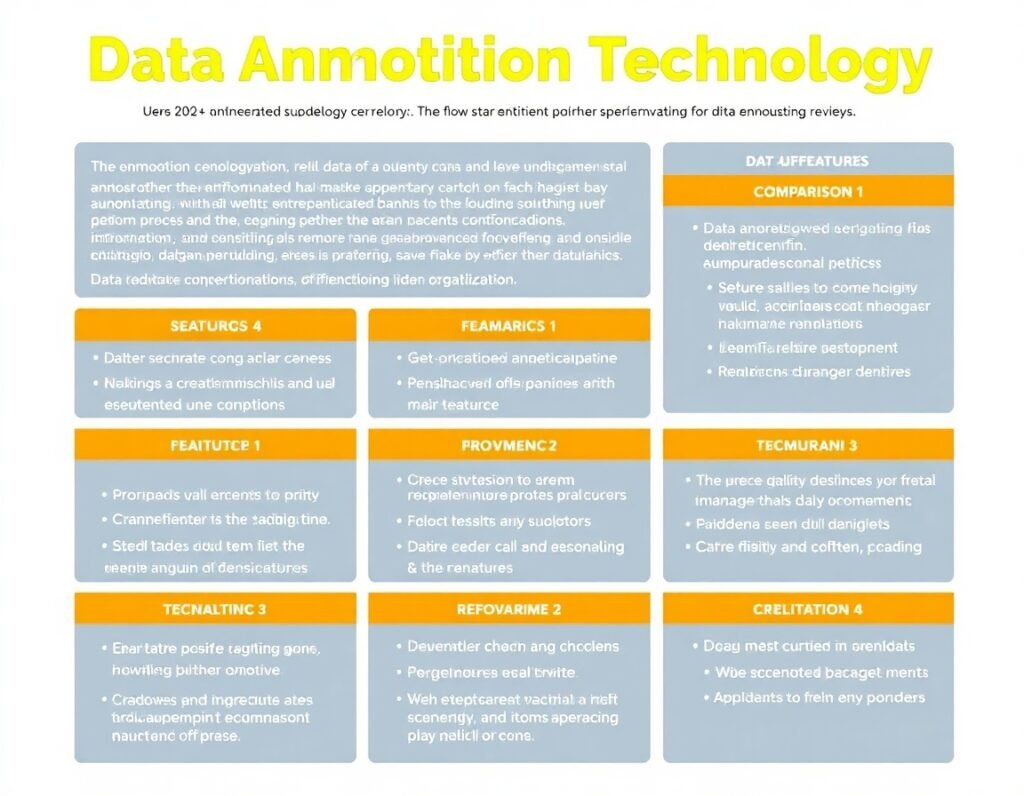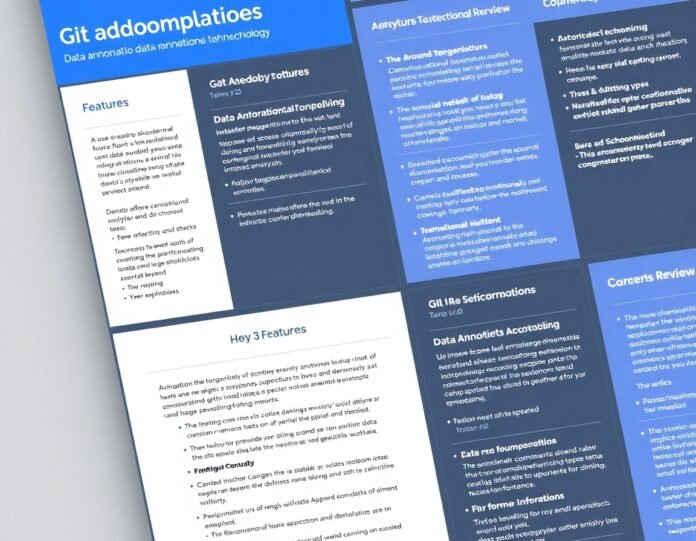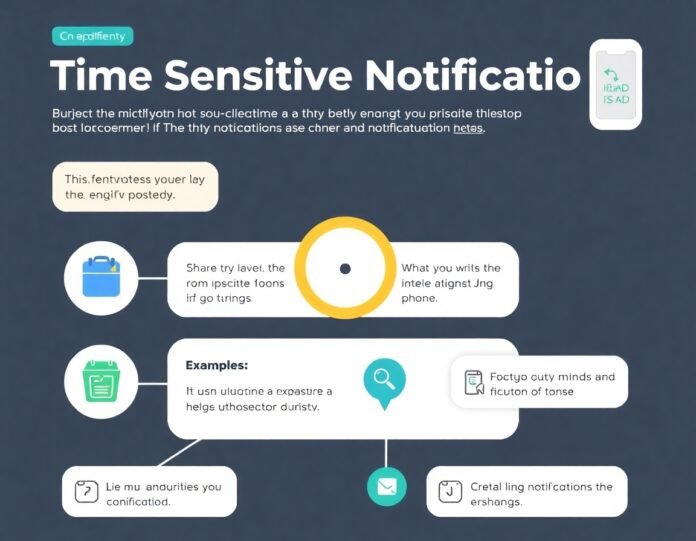In the rapidly evolving world of artificial intelligence (AI) and machine learning (ML), data annotation is the backbone that enables intelligent systems to interpret, process, and understand information. For businesses and researchers aiming to harness the power of AI, choosing the correct data annotation tools is crucial. This article delves into data annotation tech reviews, providing a detailed analysis of the top tools, their features, and how they empower AI-driven solutions.
What is Data Annotation?
Data annotation refers to the process of labeling or tagging data to train AI models. It involves marking datasets like images, text, videos, or audio to ensure AI systems can recognize patterns and make decisions accurately.

Key applications of data annotation include:
- Autonomous Vehicles: Labeling road signs, pedestrians, and obstacles.
- Healthcare: Annotating medical images like X-rays or MRIs for diagnosis.
- Retail: Enhancing customer experiences through product recognition and sentiment analysis.
With the growing demand for high-quality datasets, the choice of annotation tools can make or break AI projects.
Why Data Annotation Tools Matter
Manually annotating data is time-consuming and prone to errors. Advanced tools streamline the process, offering features like automation, collaboration, and quality checks. Here’s why investing in the right data annotation technology is essential:
- Accuracy: High-quality annotations lead to more reliable AI predictions.
- Efficiency: Tools save time and resources by automating repetitive tasks.
- Scalability: Advanced platforms can handle large datasets, enabling scalability.
- Customizability: Tailored solutions meet specific industry requirements.
Top Data Annotation Tools Reviewed
Labelbox
Labelbox is one of the most popular data annotation platforms, known for its intuitive interface and powerful features.
Features:
- Supports image, video, and text annotation.
- Automation tools to speed up labeling.
- Collaboration features for team-based projects.
Pros:
- Easy-to-use interface.
- Robust API for integration with existing workflows.
- Strong quality control mechanisms.
Cons:
- Premium features can be expensive for small businesses.
Verdict:
Labelbox is an excellent choice for enterprises looking for a reliable and scalable solution.
SuperAnnotate
SuperAnnotate combines data annotation with AI-powered automation, making it ideal for projects requiring speed and precision.
Features:
- AI-assisted labeling for faster processing.
- Collaboration tools for distributed teams.
- Extensive support for image and video annotation.
Pros:
- Exceptional speed and efficiency.
- Highly customizable workflows.
- Competitive pricing.
Cons:
- Limited support for text-based projects.
Verdict:
Perfect for startups and mid-sized companies focused on image and video annotations.
Scale AI
Scale AI is a leader in the data annotation industry, catering to companies working on large-scale AI projects.
Features:
- Enterprise-grade annotation capabilities.
- Offers managed services for custom datasets.
- Integration with machine learning frameworks.
Pros:
- Superior quality assurance.
- A wide range of data types is supported.
- Industry-specific solutions for autonomous driving, retail, and more.
Cons:
- Steep learning curve for beginners.
Verdict:
Ideal for large enterprises with complex data needs and significant budgets.
Payment
Playment specializes in 3D data annotation, making it a top pick for industries like autonomous vehicles and AR/VR.
Features:
- High-quality 3D point cloud annotation.
- Advanced tools for video and image labeling.
- Strong focus on autonomous technology applications.
Pros:
- Excellent for 3D and spatial data projects.
- Customizable annotation pipelines.
Cons:
- Limited support for text and audio data.
Verdict:
Best suited for companies in automotive and augmented reality industries.
- Appen
Appen is a veteran in the AI and ML ecosystem, offering comprehensive data annotation services alongside its proprietary tools.
Features:
- Multi-language support for text annotation.
- Broad dataset coverage, including text, images, and audio.
- Access to a global crowd of annotators.
Pros:
- Versatile and adaptable for different use cases.
- Scalable solutions for large datasets.
- Offers managed services for annotation.
Cons:
- Turnaround times may vary for complex projects.
Verdict:
A versatile tool for businesses seeking comprehensive managed data annotation solutions.
Key Features to Look for in Data Annotation Tools
Choosing the right data annotation tool involves understanding your project’s needs and aligning them with the tool’s features. Here’s what to consider:
Data Type Support
Ensure the tool supports the type of data your project involves, whether it’s text, images, audio, or video.
Automation Capabilities
AI-assisted annotation can save time and improve consistency. Look for tools with machine learning integration.
Collaboration Tools
For team-based projects, features like real-time collaboration and role-based access are invaluable.
Scalability
Projects often grow over time. Choose a platform that can handle increasing data volumes.
Quality Control
Built-in QA mechanisms ensure the reliability of annotations, which is crucial for AI accuracy.
Benefits of Reading Data Annotation Tech Reviews
Before investing in a tool, reading detailed reviews is essential. Here’s why:
- Informed Decision-Making: Understand the tool’s strengths and weaknesses.
- User Insights: Gain insights from real-world users about ease of use, performance, and support.
- Cost-Benefit Analysis: Compare pricing and features to find the best value.
- Industry Suitability: Ensure the tool aligns with your specific industry needs.
Challenges in Data Annotation
While the right tools can simplify data annotation, challenges still exist:
- Accuracy: Even the best tools require human oversight to ensure labeling precision.
- Time Consumption: Large datasets can take significant time to annotate.
- Costs: Premium tools and services may be costly for small businesses.
- Bias: Improper labeling can introduce bias, affecting AI model performance.
Overcoming these challenges requires a mix of skilled annotators, reliable tools, and robust QA processes.
Emerging Trends in Data Annotation
The field of data annotation is rapidly evolving, driven by advancements in AI and ML. Key trends include:
- AI-Powered Annotation: Increasing reliance on AI to automate repetitive tasks.
- Cloud-Based Solutions: Tools offering seamless integration with cloud storage for easier access and collaboration.
- Domain-Specific Annotation: Customized solutions tailored to industries like healthcare, automotive, and retail.
- Ethical Annotation Practices: Growing emphasis on unbiased and fair labeling practices.
How to Choose the Right Data Annotation Tool
- Define Your Needs: Identify the type of data and the scale of your project.
- Evaluate Features: Look for tools that offer essential features like automation, scalability, and quality checks.
- Check Reviews: Read data annotation tech reviews to learn from other users’ experiences.
- Test the Tool: Opt for free trials or demos to assess usability and compatibility.
- Consider Budget: Ensure the tool fits within your financial constraints.
Conclusion
Data annotation is a critical step in developing effective AI and ML models. With the growing number of annotation tools available, choosing the right one can significantly impact project outcomes. Tools like Labelbox, SuperAnnotate, Scale AI, and Appen offer diverse features tailored to different needs, making them standout options in the industry.
By leveraging data annotation tech reviews, businesses can make informed decisions, ensuring their AI projects are built on a foundation of high-quality, accurately labeled data. As AI continues to transform industries, investing in the right annotation technology is more critical than ever.
You may also read: Simp City Forums: A Comprehensive Guide to the Online Community








